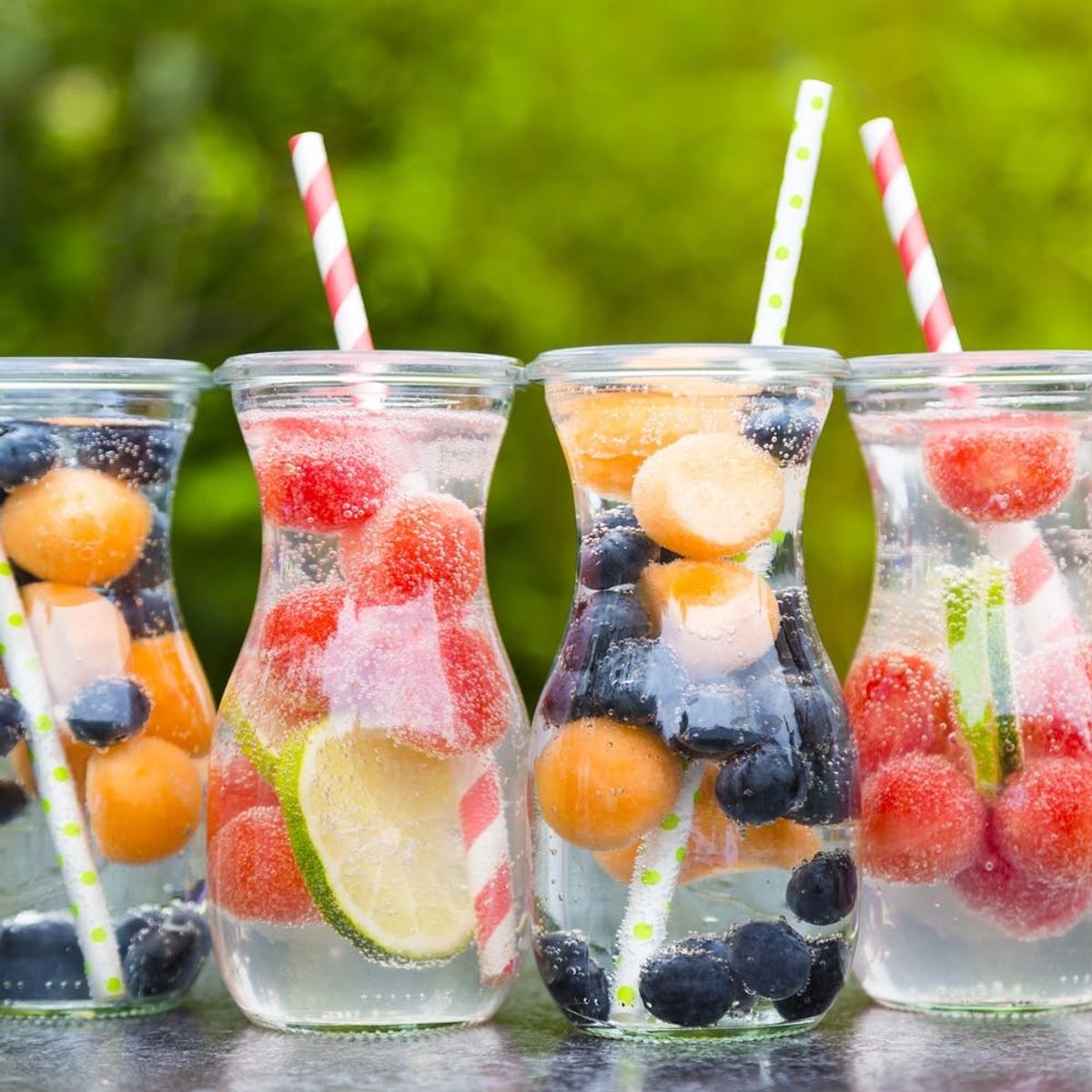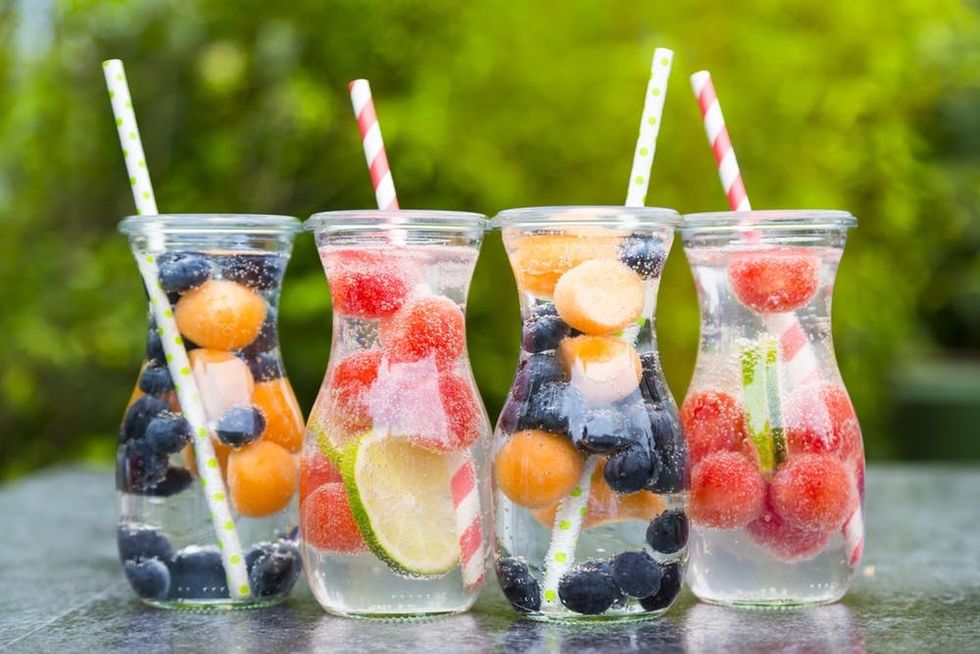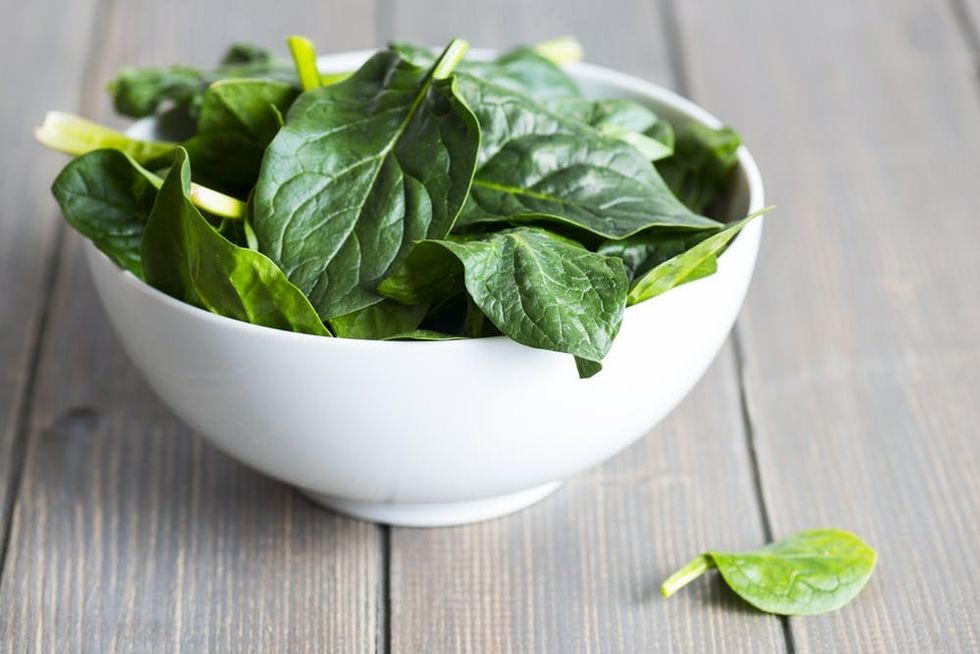Small changes add up.
12 Simple Swaps to Eat Healthier Without Really Trying

If there’s one bedrock tenet to my philosophy as a nutritionist, it’s this: Small changes add up. I’ve seen the truth of this simple statement in my own life and the lives of others. Case in point: It was an itty-bitty New Year’s Resolution to eat more fish and beans (and less red meat) that eventually snowballed into my decision to switch to a career in nutrition in the first place.
If you feel you’d like to be healthier but aren’t ready to totally overhaul your diet, Marie Kondo-style, why not start small? Introduced gradually, healthier substitutions here and there don’t really feel like effort — but can add up to significant results. See where these 12 little changes to your eating habits take you.

1. Sparkling Water Instead of Soda: We probably don’t need to rehash facts and figures about how sugary and artificially sweetened sodas promote diabetes, make you gain weight, and even mess with your microbiome. Keep the bubbles and ditch the sugar with naturally flavored sparkling water. Still need a hint of sweetness? Go halvesies with sparkling water and juice, or add frozen fruit.
2. Whole Grains Instead of White: The USDA recommends “making half your grains whole.” It can’t be too hard to make the switch just half-time, right? Reach for whole grain (instead of white, also known as “refined”) pastas, breads, and cereals for more fiber and other nutrients.
3. Oatmeal Instead of Breakfast Cereal: Speaking of grains, how healthy is your morning breakfast cereal? Odds are, not very. Many packaged cereals contain high amounts of sugar and little fiber and protein. Instead of letting dessert masquerade as your breakfast, try a bowl of good old-fashioned oatmeal. One serving of quick-cooking oats offers four grams of fiber and five grams of protein. And with one little gram of sugar, you can go ahead and add that maple syrup you crave.
4. Olive Oil instead of Vegetable Oil or Butter: Olive oil really does live up to its reputation as an excellent choice for heart-healthy cooking. Its monounsaturated fats help protect the cardiovascular system, while many other oils (and butter) contain damaging trans and/or saturated fats. Install an attractive olive oil cruet on your stovetop to remind yourself to reach for the EVOO when sautéing or roasting.
5. Applesauce or Mashed Avocado Instead of Butter in Baking: Love baking banana bread for a leisurely Saturday morning? Think of it as an opportunity to experiment with alternative ingredients! To cut calories and unhealthy fats, use applesauce or mashed avocado in place of at least half the butter or oil in baked goods. The more you experiment, the more you’ll get the hang of the perfect balance in your favorite recipes.

7. Spinach Instead of Iceberg Lettuce in Salads: Talk about a simple switch. When grocery shopping for your dinner salad, opt for spinach (or any dark leafy green) instead of the less-nutritious iceberg. Leafy greens will give you a boost of fiber, vitamin A, and vitamin K — and they’re associated with decreased risk of cancer.
8. Coffee Instead of Energy Drinks: Many energy drinks are laden with shocking amounts of sugar. A can of Red Bull packs 37 grams — nearly as much as a can of regular Coca-Cola. When you need a pick-me-up, coffee makes a far better choice (as long as we’re talking just coffee, not a Venti Frappuccino). And don’t worry, you won’t miss out on caffeine: Your morning joe actually contains more of this legal upper than Red Bull.
9. Real Fruits and Veggies Instead of Fruit and Veggie Snacks: Sorry to say, despite the “fruit” and “veggie” in their names, fruit snacks and veggie chips are a far cry from fresh produce. Whenever possible, swap out these processed snacks for the real thing. Pre-packaged carrot sticks or a small carton of berries can be just as convenient as bagged snacks and give you antioxidants, fiber, and other nutrients the “sticks,” “bites,” and “chips” don’t.
10. Herbs and Spices Instead of Breading and Sauces: To keep excess calories at bay, skip breadings and sauces on meal items like meats and veggies, both at home and when dining out. Instead, seek out recipes and entrees that use herbs and spices to flavor food. Tasty seasonings like rosemary, thyme, garlic, and lemon juice contain almost no calories or fat and nothing artificial. Make it exciting by picking up an unfamiliar herb and using it in a new recipe.
11. Greek Yogurt Instead of Sour Cream: For a creamy accompaniment to tacos or chili, making the switch from sour cream to Greek yogurt is pretty painless. In non-fat Greek yogurt, you’ll get one-third the calories and fat of sour cream, plus four times the protein.
12. Low-Sodium Products Instead of Regular: If you don’t need to restrict sodium for a health condition, you may rarely give a second thought to this micronutrient. But here’s some slightly scary news: Most Americans take in far more sodium than the recommended amount, and doing so is linked to serious health concerns like high blood pressure and even stomach cancer. To keep your sodium within moderate limits, swap in low-sodium products like canned tomatoes, soups, and deli meats. You may not even notice a difference.
RELATED: 5 Small Changes That Can Have a Big Positive Impact on Your Health
(Photo via Getty)



















